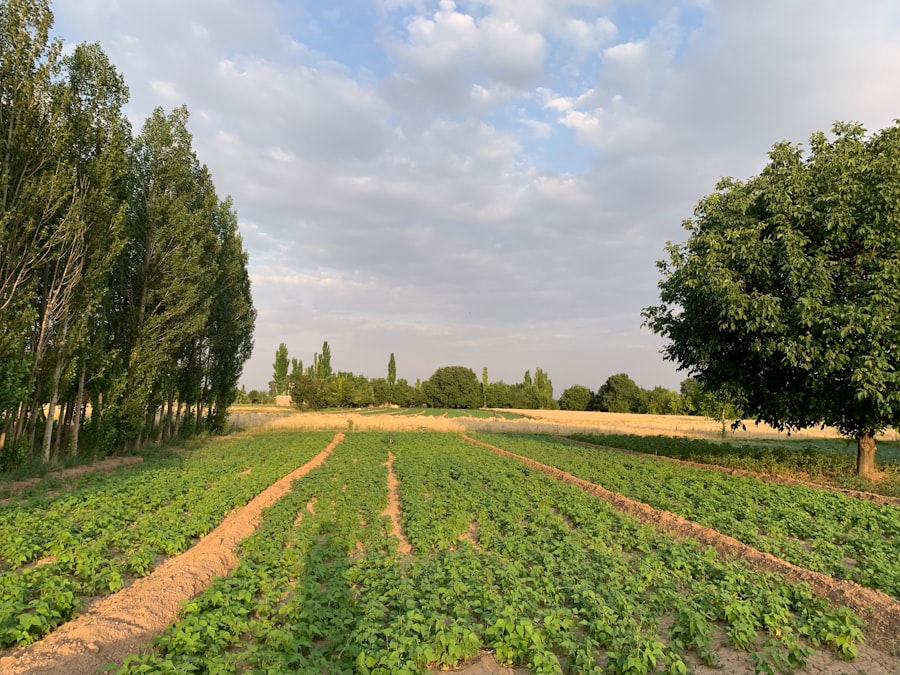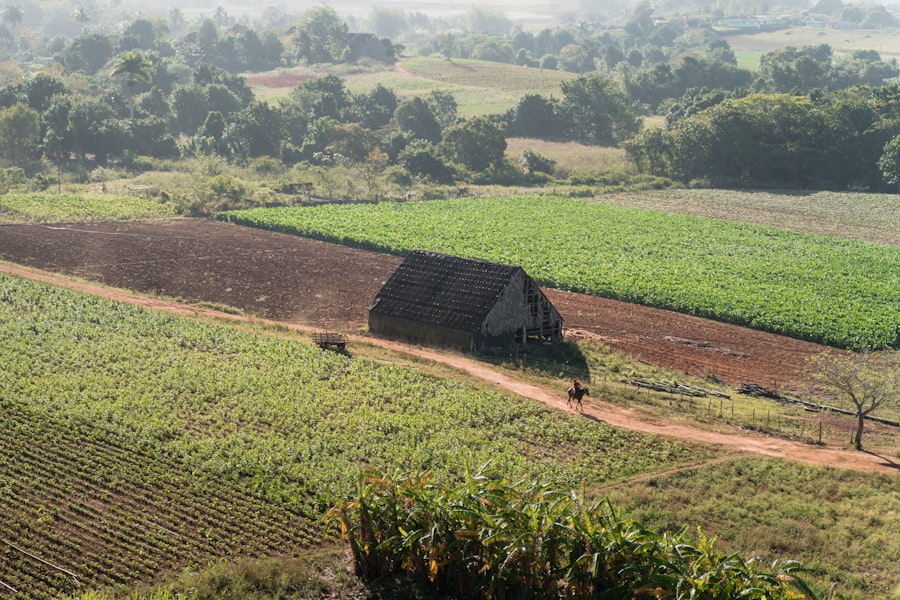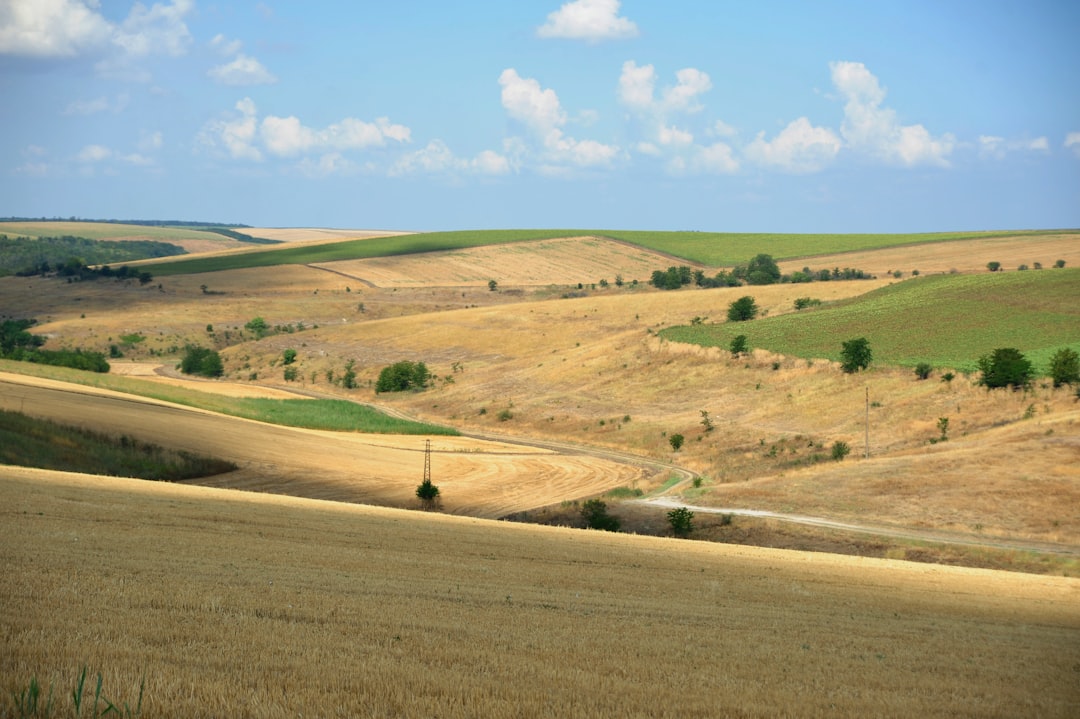Investing in agricultural land has emerged as a compelling option for individuals seeking to diversify their portfolios and secure their financial futures. One of the primary benefits of such investments is the intrinsic value of land itself. Unlike stocks or bonds, agricultural land is a tangible asset that tends to appreciate over time, often outpacing inflation.
This appreciation can provide a hedge against economic downturns, making agricultural land a stable investment choice. Furthermore, as the global population continues to grow, the demand for food and agricultural products is expected to rise, thereby increasing the value of agricultural land. In addition to potential appreciation, agricultural land can generate income through various avenues.
Leasing land to farmers or agricultural businesses can provide a steady stream of rental income, while engaging in direct farming activities can yield profits from crop sales. This dual potential for capital appreciation and income generation makes agricultural land an attractive investment for those looking to enhance their financial stability. Moreover, investing in agricultural land can also contribute to food security and sustainability, aligning financial goals with broader societal benefits.
Key Takeaways
- Investing in agricultural land can provide long-term benefits such as stable income, capital appreciation, and a hedge against inflation.
- Factors to consider before investing in agricultural land include location, soil quality, water availability, and potential for crop diversification.
- Potential returns on agricultural land investments can be evaluated through factors such as crop yields, market demand, and government policies.
- Diversifying your retirement portfolio with agricultural land investments can provide a stable and tangible asset to balance out other investments.
- Securing your retirement income with agricultural land investments can provide a reliable source of passive income and long-term wealth preservation.
Factors to Consider Before Investing in Agricultural Land
Before diving into agricultural land investments, several critical factors must be considered to ensure a sound decision. One of the foremost considerations is location. The geographical area where the land is situated plays a significant role in its productivity and potential returns.
Regions with fertile soil, favorable climate conditions, and access to water resources are typically more desirable for agricultural activities. Investors should conduct thorough research on local agricultural trends and market demands to identify the best locations for investment. Another essential factor is the type of crops or livestock that can be produced on the land.
Different regions may be better suited for specific types of agriculture, and understanding these nuances can help investors make informed choices. Additionally, zoning laws and regulations can impact the use of agricultural land, so it is crucial to familiarize oneself with local policies that may affect farming operations or land development. By carefully evaluating these factors, investors can position themselves for success in the agricultural sector.
Evaluating the Potential Returns on Agricultural Land Investments

Assessing the potential returns on agricultural land investments requires a comprehensive understanding of various financial metrics. Investors should consider both short-term and long-term returns when evaluating a property. Short-term returns may come from leasing agreements or immediate crop sales, while long-term returns are often realized through land appreciation and increased productivity over time.
Analyzing historical data on land values in the area can provide insights into potential appreciation rates. Additionally, investors should factor in operational costs associated with managing agricultural land. These costs may include maintenance, taxes, insurance, and any necessary improvements to enhance productivity.
By calculating the net income generated from the land after accounting for these expenses, investors can gain a clearer picture of their potential returns. It is also advisable to compare these returns with other investment opportunities to determine whether agricultural land aligns with their overall financial goals.
Diversifying Your Retirement Portfolio with Agricultural Land Investments
| Metrics | Benefits |
|---|---|
| Historical Returns | Stable and consistent returns over time |
| Inflation Hedge | Agricultural land investments can act as a hedge against inflation |
| Diversification | Provides diversification from traditional stocks and bonds |
| Tax Benefits | Potential tax advantages such as depreciation and 1031 exchanges |
| Global Demand | Increasing global demand for food and agricultural products |
In an era where market volatility is commonplace, diversifying retirement portfolios has become increasingly important. Agricultural land investments offer a unique opportunity for diversification due to their low correlation with traditional asset classes such as stocks and bonds. By incorporating agricultural land into their portfolios, investors can reduce overall risk while potentially enhancing returns.
This diversification strategy can be particularly beneficial during economic downturns when traditional investments may falter. Moreover, agricultural land investments can provide a sense of stability and predictability in retirement planning. As food demand continues to rise globally, the agricultural sector is likely to remain resilient, making it an attractive option for long-term investment.
By allocating a portion of their retirement savings to agricultural land, investors can create a balanced portfolio that not only aims for growth but also provides a safeguard against market fluctuations.
Securing Your Retirement Income with Agricultural Land Investments
For many individuals approaching retirement, securing a reliable income stream is paramount. Agricultural land investments can play a pivotal role in achieving this goal by providing consistent cash flow through leasing arrangements or direct farming operations. By leasing land to farmers or agribusinesses, investors can receive regular rental payments that contribute to their retirement income.
This passive income stream can be particularly appealing for retirees seeking financial stability without the demands of active management. In addition to leasing income, engaging in farming activities can also yield profits from crop sales. While this approach may require more involvement and expertise, it offers the potential for higher returns compared to passive leasing arrangements.
Investors should carefully assess their willingness to engage in farming operations and consider partnering with experienced farmers or agronomists to maximize productivity and profitability. By strategically leveraging agricultural land investments, retirees can create a robust income foundation for their golden years.
Mitigating Risks Associated with Agricultural Land Investments

Like any investment, agricultural land comes with its own set of risks that investors must navigate. One significant risk is market volatility, which can impact crop prices and demand for agricultural products. Fluctuations in commodity prices can affect rental income and overall profitability, making it essential for investors to stay informed about market trends and economic conditions that may influence their investments.
Additionally, environmental factors such as droughts, floods, or pest infestations can pose risks to agricultural productivity. Investors should consider implementing risk management strategies such as crop insurance or diversifying their agricultural activities to mitigate these challenges. By being proactive in addressing potential risks and developing contingency plans, investors can safeguard their agricultural land investments and enhance their chances of long-term success.
Tax Benefits of Investing in Agricultural Land for Retirement
Investing in agricultural land can also offer several tax advantages that enhance its appeal as a retirement investment strategy. One notable benefit is the ability to defer capital gains taxes through 1031 exchanges when selling one property and purchasing another similar property. This tax deferral allows investors to reinvest their profits into new agricultural ventures without incurring immediate tax liabilities.
Furthermore, expenses related to managing agricultural land—such as maintenance costs, property taxes, and improvements—may be tax-deductible. This deduction can help offset income generated from leasing or farming activities, ultimately reducing an investor’s overall tax burden. By leveraging these tax benefits effectively, individuals can maximize their returns on agricultural land investments while minimizing their tax liabilities.
Long-Term Growth Potential of Agricultural Land Investments
The long-term growth potential of agricultural land investments is one of the most compelling reasons for individuals to consider this asset class for retirement planning. As global populations continue to rise and urbanization expands, the demand for food production is expected to increase significantly. This growing demand creates opportunities for agricultural land values to appreciate over time as more people seek access to arable land for food production.
Moreover, advancements in technology and sustainable farming practices are likely to enhance productivity on agricultural lands, further driving growth potential. Investors who recognize these trends and position themselves accordingly stand to benefit from substantial returns over the long term.
How to Acquire and Manage Agricultural Land for Retirement
Acquiring agricultural land requires careful planning and due diligence to ensure a successful investment experience. Prospective investors should start by identifying suitable properties that align with their investment goals and budget. Engaging with real estate agents who specialize in agricultural properties can provide valuable insights into available options and market conditions.
Once an investor has acquired agricultural land, effective management becomes crucial for maximizing returns. This may involve overseeing farming operations, maintaining the property, or managing leasing agreements with tenants. Investors should consider partnering with experienced farm managers or agronomists who can provide expertise in optimizing productivity and ensuring sustainable practices are followed.
By taking a proactive approach to management, investors can enhance the value of their agricultural land investments over time.
Ensuring Sustainability and Environmental Responsibility in Agricultural Land Investments
As awareness of environmental issues grows, investors are increasingly recognizing the importance of sustainability in agricultural practices. Investing in environmentally responsible farming methods not only aligns with ethical considerations but also enhances long-term viability and profitability. Sustainable practices such as crop rotation, organic farming, and water conservation can improve soil health and increase yields while minimizing negative impacts on the environment.
Investors should seek out properties that prioritize sustainability and consider implementing eco-friendly practices on their own lands. By doing so, they not only contribute positively to the environment but also appeal to a growing market of consumers who prioritize sustainably produced goods. This commitment to environmental responsibility can enhance the overall value of agricultural land investments while fostering a positive reputation within the community.
Seeking Professional Advice for Agricultural Land Investments in Retirement
Navigating the complexities of agricultural land investments requires expertise and knowledge that many individual investors may not possess. Seeking professional advice from experts in agriculture, real estate, and finance can provide invaluable guidance throughout the investment process. Financial advisors specializing in retirement planning can help individuals assess their overall financial situation and determine how much they should allocate toward agricultural investments.
Additionally, consulting with agronomists or farm management professionals can offer insights into best practices for maximizing productivity on agricultural lands. These experts can assist investors in making informed decisions about crop selection, soil management, and sustainable practices that align with their investment goals. By leveraging professional advice, individuals can enhance their chances of success in agricultural land investments while ensuring they make well-informed choices that support their retirement objectives.
In conclusion, investing in agricultural land presents numerous benefits for individuals looking to secure their financial futures while contributing positively to society through sustainable practices. By understanding the advantages and challenges associated with this asset class, considering key factors before investing, evaluating potential returns, diversifying retirement portfolios, mitigating risks, leveraging tax benefits, recognizing long-term growth potential, acquiring and managing properties effectively, ensuring sustainability, and seeking professional advice, investors can position themselves for success in this rewarding field. As they embark on this journey toward financial security through agricultural land investments, they will not only cultivate wealth but also play a vital role in supporting food production and environmental stewardship for future generations.
Investing in agricultural land for retirement can be a lucrative and sustainable option for those looking to diversify their portfolio and secure a steady income stream. As highlighted in a related article on How Wealth Grows, agricultural land not only offers the potential for capital appreciation but also provides opportunities for leasing to farmers, which can generate regular rental income. The article delves into the benefits of this investment strategy, including its resilience against inflation and its role in supporting local food production, making it an attractive choice for forward-thinking retirees.
WATCH THIS! 🫣Why Wall Street Is Buying Up America’s Farmland (And Why It Should Terrify You)
FAQs
What is agricultural land investment?
Agricultural land investment involves purchasing land for the purpose of farming, ranching, or other agricultural activities with the expectation of generating income or appreciation over time.
Why consider investing in agricultural land for retirement?
Investing in agricultural land for retirement can provide a stable source of income through leasing the land to farmers or ranchers. It also offers the potential for long-term appreciation and can serve as a hedge against inflation.
What are the benefits of investing in agricultural land for retirement?
Some benefits of investing in agricultural land for retirement include potential for passive income, portfolio diversification, and the opportunity to own a tangible asset with intrinsic value.
What are the risks associated with investing in agricultural land?
Risks of investing in agricultural land for retirement include exposure to the volatility of commodity prices, environmental factors such as drought or natural disasters, and potential regulatory changes affecting the agricultural industry.
How can one invest in agricultural land for retirement?
Investing in agricultural land for retirement can be done through direct purchase of land, investing in real estate investment trusts (REITs) focused on agriculture, or through agricultural land investment funds.
What should one consider before investing in agricultural land for retirement?
Before investing in agricultural land for retirement, it’s important to consider factors such as location, soil quality, water rights, potential for income generation, and the overall economic outlook for the agricultural industry. It’s also advisable to seek professional advice from financial and legal experts.
